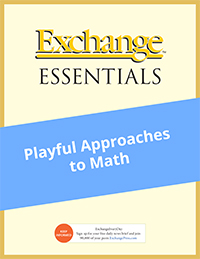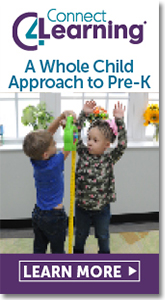ExchangeEveryDay Past Issues
 << Previous Issue
| View Past Issues | | Next Issue >>
<< Previous Issue
| View Past Issues | | Next Issue >> -Eleanor Roosevelt
In an article that is part of the Exchange Essentials article collection, Anti-Bias Education, teacher Anita Howard reflects on what she has learned during her long journey of working on behalf of undervalued children. She explains:
“When the intellectual gatekeepers of our teaching profession launched me with the obligatory charge to ‘go forth and do good work’ over 30 years ago, I can clearly remember having contradictory feelings of bubbling enthusiasm and unsettling dread. I could certainly account for the bubbling enthusiasm. After all, as a fairly engaged undergraduate student, my professors had introduced me to the pathfinding thinking of towering education minds…With this exciting knowledge in possession, I — a young and very idealistic Black American woman — lovingly concerned about the poor education usually reserved for poor Black and Brown children, was eager to offer my humble contributions to the rich education and civic history of the many people who had done good work on behalf of these habitually miseducated and undervalued children.
However, as much as I tried…it took about ten years before I was able to understand the source and meaning of the unnerving feeling. I mainly credit conversations with my husband, a political science professor, for helping me find my way. It was especially when we decided to crosspollinate classic works from our respective fields that important insights began to emerge. For example, my husband began to truly appreciate the importance of giving children a strong foundation in their early years, while I benefited greatly from reflecting on teacher training and human rights. That is, on how teacher training in human rights can help to grow the resilience we teachers need to practice our craft and to nourish our souls. This resilience is especially important when we seek to support disadvantaged children, families, and communities placed at risk.”
Howard tells the story of working with a colleague whose children has experienced a shooting dangerously close to their classroom. The colleague explained that her school did not have a system in place for supporting children impacted by violence and the toxic stress it can bring — something that would provide them the social and emotional support they needed in such an environment…She asked rhetorically, ‘Do we really expect children to learn in this kind of a mess?’
The teacher explained that…the shooting event on this day had convinced her that she needed to do more to help her children. She said that even though her teacher development programs had not prepared her in human and children rights, she had briefly been a part of a Teachers for Social Justice organization that had introduced her to the subject. She said the shooting had stirred her to teach her children about their right to live and learn without fear…She planned to create and implement a plan based on human and children rights.”
Playful Approaches to Math |






Post a Comment